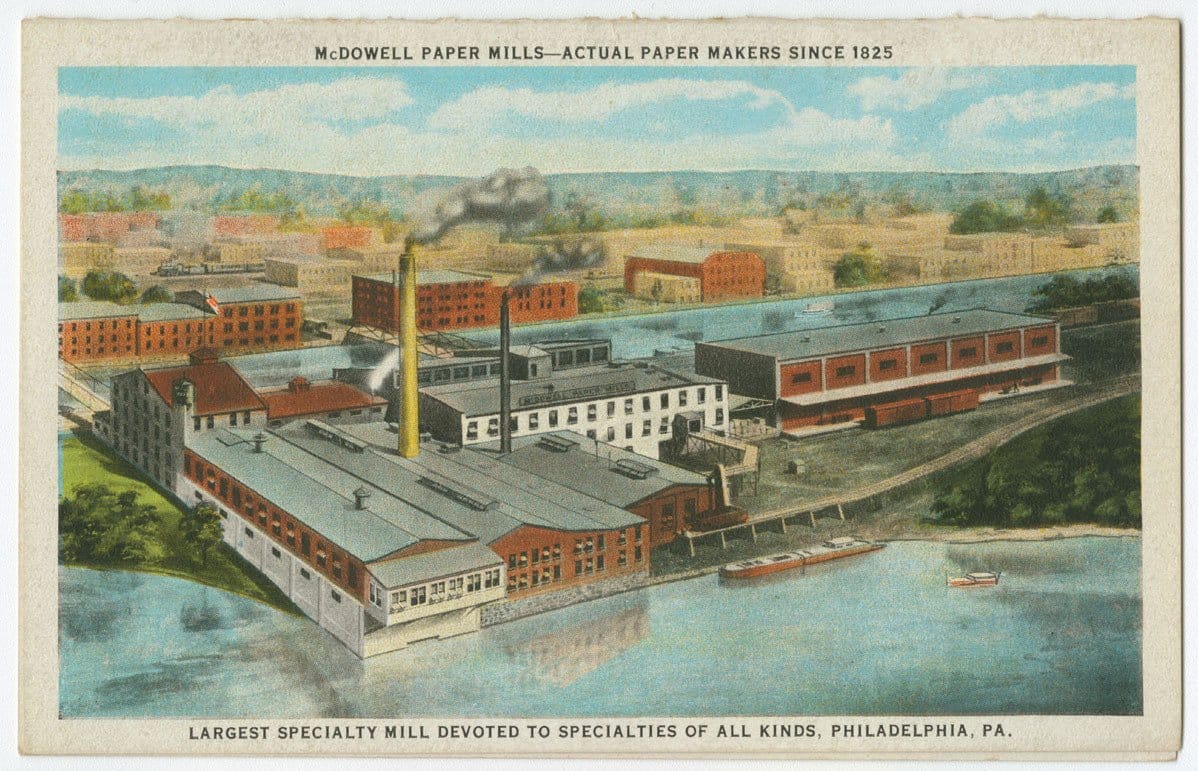Grab a cozy spot and let’s delve into the fascinating world of papermaking! This ancient craft has played a pivotal role in shaping our understanding of knowledge, communication, and art. From its humble beginnings in Egypt centuries ago to the cutting-edge techniques used today, papermaking has evolved in captivating ways. Join us on this journey through time, where we uncover the secrets of the art that has given us the pages we write on, the books we read, and the beautiful works of art that adorn our walls.
History of Papermaking Timeline
Imagine a world without paper. No books, no quick notes, no way to easily capture a fleeting thought. It’s difficult to imagine such a world, but that was the reality before the invention of paper. This revolutionary material transformed how we communicate, learn, and preserve information. Let’s travel back in time to trace the origins and evolution of this ubiquitous material.
Ancient Origins (c. 3000 BC):
Our story begins in ancient Egypt, where people developed papyrus, a paper-like material. Crafted from the papyrus plant, this writing surface was a significant advancement from earlier methods like etching on clay tablets or carving on stone. Papyrus scrolls became the preferred medium for recording important documents, religious texts, and literary works.
The Chinese Innovation (c. 105 AD):
While the Egyptians made significant strides with papyrus, it was in China that true paper, as we know it today, was born. Cai Lun, a court official during the Han Dynasty, is widely credited with this groundbreaking invention. While Cai Lun’s exact process remains unclear, we know he experimented with various plant fibers, likely including mulberry bark, hemp, and rags. He transformed these materials into a pulp, which he then pressed and dried to create sheets of paper. This innovation marked a pivotal moment in history, establishing a more durable and versatile writing material than papyrus.
Paper’s Journey Westward (8th – 13th Century AD):
Like any valuable commodity, the knowledge of papermaking followed the bustling trade routes, slowly making its way westward. By the 8th century, papermaking had reached the Islamic world. Here, it was embraced by scholars and artists, becoming instrumental in preserving and spreading knowledge throughout the region. Paper’s journey continued, and by the 11th century, it had reached Europe. The establishment of water-powered paper mills in the 13th century marked a turning point. This technological advancement made paper production significantly faster and more efficient, leading to wider availability and affordability.
Industrial Revolution and Beyond (19th Century – Present):
The Industrial Revolution, a period of unprecedented technological advancement, brought about significant changes to papermaking. The invention of the Fourdrinier paper machine in the 19th century revolutionized the industry. This machine used wood pulp as the primary material, allowing for the mass production of paper. The result was a shift from hand-crafted paper, often made from rags and other fibers, to a more mechanized and large-scale production model. This transition made paper more affordable and accessible, significantly impacting literacy rates and the spread of knowledge.
Paper Today and Tomorrow:
Despite the rise of digital technology, paper remains an integral part of our lives. We encounter it in countless forms daily, from books and newspapers to packaging and even construction materials. The paper industry is constantly evolving, seeking more sustainable practices to reduce its environmental impact. Researchers continue to explore alternative plant-based materials and innovative production methods to make papermaking more eco-friendly.
The Future of Paper:
The story of papermaking is still being written. As technology advances and environmental concerns intensify, the quest for new and innovative ways to create and use paper continues. Perhaps we will see paper made from algae, mushrooms, or other sustainable materials become commonplace. The journey of papermaking, from its ancient origins to its uncertain future, is a testament to human ingenuity and our enduring fascination with this versatile material.
What is the History of Papermaking?
To truly understand the impact of paper, we need to delve deeper into its fascinating history. This journey takes us across continents and through centuries, highlighting the ingenuity and adaptability that have shaped this essential material.
Before Paper:
Before the invention of paper, people relied on a variety of materials to record information and communicate. In ancient Mesopotamia, clay tablets served as a durable, if somewhat cumbersome, writing surface. The Egyptians developed papyrus, made from the papyrus plant, which offered a lighter and more portable alternative. Parchment, made from animal skins, was another widely used material, particularly in ancient Greece and Rome. While these materials were crucial in their time, they all had limitations in terms of durability, cost, or ease of production.
Enter Paper: A Chinese Innovation:
The invention of paper, as we know it today, is traditionally attributed to Cai Lun, a Chinese court official, in approximately 105 AD. However, recent archaeological discoveries suggest that paper-like materials may have existed in China even earlier. Regardless of the exact timeline, it was during the Han Dynasty that papermaking truly flourished in China.
| Time Period | Location | Milestone |
|---|---|---|
| ~3000 BC | Egypt | Papyrus paper from papyrus reeds |
| ~105 AD | China | Invention of paper from plant fibers |
| ~751 AD | Islamic World | Introduction and spread of papermaking |
A Global Commodity:
The knowledge of papermaking, like a well-traveled explorer, began to spread beyond China’s borders. By the 8th century, papermaking had made its way to Central Asia, likely through interactions along the Silk Road. The Islamic Golden Age saw a flourishing of intellectual and cultural pursuits, and paper played a crucial role in this renaissance. From the Middle East, papermaking techniques journeyed further westward, reaching Europe by the 11th century. The introduction of paper to Europe was nothing short of transformative.
| Time Period | Location | Milestone |
|---|---|---|
| ~1000 AD | Europe | Introduction of papermaking |
| ~1200 AD | Europe | Water-powered mills improve paper production efficiency |
| ~1800 AD | Europe/America | Fourdrinier machine allows for mass paper production from wood |
Industrial Revolution and the Modern Era:
The Industrial Revolution brought about a new era of papermaking. The invention of the Fourdrinier paper machine in the 19th century mechanized the process, making mass production possible. This innovation dramatically increased the availability and affordability of paper, contributing to rising literacy rates and the expansion of education.
Paper’s Enduring Legacy:
Today, paper remains an indispensable part of our world. From books and newspapers to packaging and hygiene products, its uses are vast and varied. While digital technologies have undoubtedly transformed the way we communicate and consume information, paper continues to hold its own.
Looking Ahead:
The journey of papermaking is far from over. As we grapple with environmental concerns and the need for sustainability, the paper industry faces new challenges and opportunities. Researchers are exploring alternative fibers, such as bamboo and agricultural residues, to reduce reliance on traditional wood pulp. The development of biodegradable and compostable paper products is also gaining traction.
Remember, history is a constantly evolving field of study. New discoveries and interpretations can change our understanding of the past. Keep exploring, keep asking questions, and who knows, maybe you’ll contribute to the ongoing story of papermaking!
What is the history of handmade paper?
Stepping back in time, imagine a world where the written word was a luxury, etched onto stone or laboriously copied onto papyrus. In this world, around 150 BC, ancient China unveiled a revolution – handmade paper. It’s difficult to pinpoint the exact moment of invention, but evidence suggests that resourceful individuals experimented with readily available materials. They likely soaked hemp fibers, discarded fishnets, and even tree bark in water, pounding them into a mushy pulp. This pulp, spread thinly and dried, marked the birth of a versatile new material.
A Catalyst for Knowledge:
The impact of handmade paper was profound. The Chinese, renowned for their love of knowledge and meticulous record-keeping, quickly recognized its potential. Imagine the excitement when, around 149 BC, the first dictionary, boasting a staggering 10,000 characters, was painstakingly transcribed onto this new medium. This monumental achievement showcases how handmade paper facilitated the collection and dissemination of knowledge on an unprecedented scale.
Beyond Borders:
As with many transformative inventions, the knowledge of handmade papermaking gradually spread beyond China’s borders. It’s fascinating to consider how this knowledge traveled – perhaps carried by merchants along the Silk Road or shared through diplomatic exchanges. This dissemination of knowledge is a testament to the universal desire for effective communication and record-keeping tools.
A Legacy of Adaptation:
While the fundamental principles of handmade papermaking have endured, it’s important to note that the craft has never been static. As it journeyed across Asia and beyond, each region infused its unique character into the process. Craftspeople experimented with local plants, adapting techniques to suit available resources and evolving aesthetic preferences.
A Note on Historical Interpretation:
While it’s tempting to pinpoint the invention of handmade paper to a specific time and place, it’s essential to acknowledge the complexities of historical research. Ongoing archaeological discoveries and scholarly interpretations constantly reshape our understanding of the past. What we consider “fact” today might be revised tomorrow with new evidence.
The history of handmade paper is a captivating journey of innovation, adaptation, and cultural exchange. As we marvel at the artistry and craftsmanship of handmade paper, let’s also appreciate the spirit of exploration and knowledge sharing that allowed this remarkable material to leave its indelible mark on human history.
How did they make paper in the 1700s?
Fast forward to the 1700s, a time before mass production and automated factories. Papermaking, while well-established, was a labor-intensive process, relying on skilled craftspeople and readily available resources.
From Rags to Riches (or at Least, Paper):
Unlike today’s paper industry, which primarily uses wood pulp, papermaking in the 1700s relied heavily on recycled textiles – old clothes, worn-out linens, and other fabric scraps. These discarded materials, carefully gathered and sorted, formed the foundation of their paper.
The Transformation Begins:
Imagine craftspeople meticulously cutting these fabrics into small pieces, then soaking them in large vats of water. This soaking process, aided by time and perhaps a bit of stirring, helped break down the fibers, creating a pulpy concoction.
Molding the Future:
This watery pulp was then poured onto a special mold – a rectangular frame covered with a fine mesh screen. The mold, often submerged in the vat, allowed the water to drain away, leaving a thin layer of damp fibers on the screen. This process, repeated countless times, formed the individual sheets of paper.
Pressing Onward:
These newly formed sheets, still quite delicate, were carefully pressed to remove excess water. Imagine layers of felt and absorbent paper interleaved between the damp paper sheets, all subjected to pressure, perhaps using a screw press. This pressing not only removed water but also helped to bind the fibers together, creating a smoother, more cohesive sheet.
The Drying Game:
Next came the crucial drying stage. The damp sheets, carefully peeled from the molds, were hung to dry, often in well-ventilated lofts or drying sheds. The drying time varied depending on the weather conditions and the desired paper thickness.
Sizing for Strength:
Once dry, the paper wasn’t quite ready for use. To make it less absorbent and improve its writing surface, the paper underwent a process called “sizing.” This involved treating the sheets with a solution of starch or gelatin, which helped fill the gaps between the fibers, creating a smoother, less porous surface.
The Final Touch:
Finally, the paper was given a final inspection and any rough edges were smoothed. The result was a stack of crisp, durable sheets of “rag paper,” prized for its strength and longevity. It’s no wonder that many important documents from that era, written on this high-quality paper, have survived to this day.
Key Takeaways:
- Textile recycling was at the heart of 1700s papermaking, with old rags and fabrics forming the primary material.
- The process, while labor-intensive, involved transforming these fabrics into pulp, forming sheets, pressing out water, and drying.
- “Sizing” played a crucial role in making the paper less absorbent and more suitable for writing.
- This dedication to craftsmanship resulted in “rag paper” – a testament to the durability and quality of pre-industrial papermaking.
Who made the first paper?
The invention of paper stands as a testament to human ingenuity and our ongoing quest for effective communication. While the exact origins are shrouded in some mystery, the story typically leads us to ancient China.
Cai Lun: The Name Remembered:
Cai Lun, a court official during the Han Dynasty, is widely credited with inventing paper around 105 AD. Legend has it that Cai Lun, known for his innovative spirit, experimented with a variety of materials in his workshop. He sought to create a writing material superior to the existing options – silk, which was expensive, and bamboo strips, which were bulky.
The Ingredients of Innovation:
Accounts suggest that Cai Lun’s breakthrough came when he combined mulberry bark, hemp fibers, and old rags, grinding them into a pulp. He then pressed this pulp to remove the water, leaving behind thin, flat sheets that dried into a durable writing surface. Whether Cai Lun’s invention was truly a singular stroke of genius or the culmination of previous experimentation and refinement, his contribution to papermaking earned him a place in history.
The Spread of Knowledge:
News of this remarkable new material traveled quickly, spreading eastward to Korea and Japan via trade routes and cultural exchanges. With each new region it reached, papermaking underwent adaptations, with craftspeople experimenting with local plant fibers and refining techniques to suit their needs and resources.
The West Catches Up:
It took several centuries for papermaking to reach Europe, arriving in the 11th century. This introduction was a turning point for the West, as paper offered a more practical and affordable alternative to the traditional writing materials of parchment and vellum, both derived from animal skins.
A Legacy of Continuous Improvement:
From its ancient beginnings to its modern-day ubiquity, papermaking has always been a story of continuous improvement. While we owe a debt of gratitude to Cai Lun for his pivotal role, it’s essential to remember that countless individuals have contributed to refining and advancing this craft throughout history.
Unraveling the Mysteries:
It’s important to approach historical accounts, especially those from ancient times, with a degree of critical thinking. While Cai Lun is widely credited with inventing paper, it’s entirely possible that earlier, less documented attempts at papermaking occurred. Ongoing archaeological discoveries and research have the potential to reshape our understanding of the past.
The invention of paper is a powerful reminder that our understanding of history is constantly evolving. It encourages us to remain curious, to question what we think we know, and to appreciate the interconnectedness of human ingenuity across time and cultures.
What is the oldest paper in the world?
Piecing together the history of ancient inventions can be a thrilling puzzle. When it comes to paper, a seemingly ubiquitous material, one artifact stands out: the “Cai Lun Paper.”
A Fragment of Time:
Dating back to 105 CE, this fragmented piece of paper, discovered in a tomb in Gansu Province, China, provides tangible evidence of early papermaking. It’s a remarkable survivor, considering its age and the fragility of such ancient artifacts. The paper, believed to have been crafted by Cai Lun himself or at least during the time of his innovation, is composed of plant fibers, primarily hemp.
A Revolution in the Making:
While papyrus and parchment predate true paper, Cai Lun’s invention marked a turning point in how humans stored and shared information. The fact that this ancient paper fragment still exists after nearly two millennia speaks to the durability and longevity of paper as a writing material.
From Ancient Origins to a Global Commodity:
The invention of paper revolutionized communication, making it possible to record and disseminate information with greater ease and efficiency. Imagine the impact this had on education, governance, and the spread of knowledge throughout the ancient world.
A Testament to Human Ingenuity:
The “Cai Lun Paper” is more than just an ancient artifact. It represents a pivotal moment in human history, a testament to our capacity for innovation and our enduring quest for better ways to communicate and connect with one another.
What are the 5 Stages of Paper Making?
Have you ever paused to consider the journey of a simple sheet of paper? This everyday material, often taken for granted, undergoes a fascinating transformation from raw material to finished product. Let’s peel back the layers and explore the five key stages of papermaking.
Key Takeaways:
- Paper’s impact on communication, record-keeping, and knowledge sharing is immeasurable.
- Five essential steps – pulping, refining, sheeting, pressing, and drying – transform raw materials into the paper we use daily.
- Wood pulp is the most common material in modern papermaking.
- The process blends art and science, requiring precision and a deep understanding of materials.
- Paper’s versatility is evident in its wide range of applications, from art and writing to packaging and beyond.
1. Pulping: From Wood to Mush:
Imagine a forest of trees embarking on a transformation. Pulping is the process of breaking down raw materials, most commonly wood, into a fibrous slurry called pulp. There are two primary methods:
* **Mechanical Pulping:** This method uses grinders to physically separate wood fibers, requiring significant energy.
* **Chemical Pulping:** Chemicals are used to dissolve lignin, the substance that binds wood fibers, creating a purer pulp with longer fibers.
2. Refining: Smoothing Out the Rough Edges:
The pulp, now a watery mixture of fibers, requires further refinement. This stage focuses on achieving the desired fiber length, which influences the paper’s strength, texture, and other properties. Refiners, machines with rotating blades, are used to break down fibers further, ensuring a uniform and consistent pulp.
3. Sheeting: From Pulp to Paper (Almost!)
This stage marks the transformation from a watery pulp to a recognizable sheet. The pulp, mixed with water and other additives to achieve specific characteristics, is spread onto a moving wire mesh. As the water drains away, a thin layer of fibers begins to form – the foundation of our paper sheet.
4. Pressing: Squeezing Out the Excess
Imagine a giant, sophisticated wringer. The wet paper sheet, still delicate, is sandwiched between layers of felt and passed through a series of rollers. These rollers apply pressure, squeezing out excess water and compacting the fibers, increasing the paper’s density and smoothness.
5. Drying: The Final Touch
The final stage involves removing the remaining moisture from the paper sheet. The damp paper travels over heated rollers, where the heat evaporates the water, leaving behind a dry, stable sheet of paper.
And there you have it! These five essential stages illustrate the journey of paper, from its raw, natural state to the versatile material we interact with daily.
What is the history of paper printing?
The history of paper printing is a testament to human ingenuity and our relentless pursuit of knowledge and communication. From ancient woodblocks to modern digital presses, the technology of printing has constantly evolved, leaving an indelible mark on civilization.
Early Innovations (Before Paper):
Long before paper became the standard medium for printing, civilizations developed innovative methods to reproduce images and text. Woodblock printing, originating in ancient China, involved carving images or characters onto wooden blocks, inking the raised surfaces, and pressing them onto fabric or paper. This technique, used as early as the 7th century, spread throughout Asia and later to Europe, where it was employed for printing playing cards and religious images.
The Arrival of Paper: A Game-Changer:
The invention of paper in China around 105 CE and its subsequent spread to other parts of the world laid the foundation for a printing revolution. Paper’s lightweight, durable, and relatively inexpensive nature made it an ideal medium for mass-producing written materials. The development of movable type printing in 11th-century China, using reusable blocks for individual characters, further enhanced the potential of paper in printing.
| Time Period | Location | Milestone |
|---|---|---|
| Around 105 AD | China | Papermaking invented |
| 8th Century | Middle East & Europe | Papermaking spreads |
| 15th Century | Europe | Gutenberg invents the printing press |
| Industrial Revolution | Europe/America | New papermaking machines, wood pulp introduced |
Gutenberg’s Revolution (15th Century):
While earlier forms of printing existed, Johannes Gutenberg’s invention of the printing press in 15th-century Europe marked a pivotal moment in history. Gutenberg’s press combined movable type, made of durable metal alloy, with an efficient screw press mechanism. This innovation enabled the mass production of printed materials, including books, pamphlets, and other documents, at an unprecedented scale and speed.
The Rise of Mass Communication:
The printing press, fueled by the readily available and versatile medium of paper, revolutionized communication and knowledge dissemination. Books, once a luxury reserved for the elite, became accessible to a wider population. The printing press facilitated the Renaissance, the Reformation, and the Scientific Revolution, as new ideas and knowledge could spread rapidly across geographical boundaries.
Industrial Revolution and Beyond:
The Industrial Revolution in the 18th and 19th centuries brought about further innovations in papermaking and printing. The development of wood pulp paper and high-speed printing presses enabled the mass production of newspapers, magazines, and other printed materials for a growing audience. The 20th century witnessed the rise of offset printing, a more efficient and cost-effective method that further increased printing capacity.
The Digital Age:
The late 20th and early 21st centuries brought about the digital revolution, with computers, the internet, and mobile devices transforming how we communicate and access information. While digital technologies have undoubtedly impacted traditional printing, paper remains a relevant and widely used medium for books, packaging, and other applications.
The Future of Paper Printing:
The future of paper printing likely lies in finding a balance between its enduring value and the evolving digital landscape. Sustainable printing practices, using recycled paper and eco-friendly inks, are becoming increasingly important. Digital printing technologies, which allow for on-demand printing and personalized content, offer new possibilities for the industry.
Ongoing Research and Discoveries:
The history of paper and printing is a dynamic field of study, with ongoing research uncovering new insights and challenging existing narratives. Historians and archaeologists continue to unearth artifacts and documents that shed light on the evolution of these transformative technologies.
Keep in mind that our understanding of history is fluid, subject to revision as new discoveries come to light. The story of paper printing is an ongoing narrative, with each chapter adding depth and complexity to our understanding of this pivotal aspect of human civilization.
How did papermaking change the world?
The invention of paper, a seemingly simple innovation, set off a chain reaction of profound changes that have shaped the course of human history. Let’s explore the multifaceted ways in which papermaking transformed our world.
The Democratization of Knowledge:
Before paper, the ability to read and write was often limited to the elite and religious institutions. Information was primarily passed down orally or through expensive and time-consuming methods like carving on stone or writing on papyrus or parchment. Paper’s affordability and ease of production democratized knowledge, making it possible for a wider segment of society to access and share information.
A Catalyst for Literacy:
The spread of papermaking coincided with a rise in literacy rates. With writing materials readily available, more people could learn to read and write. This, in turn, fueled a demand for books, leading to the establishment of more schools and libraries. The ability to read and write empowered individuals, fostering critical thinking, creativity, and civic engagement.
A Time Machine on Paper:
Paper became the canvas upon which history was recorded, stories were shared, and knowledge was preserved. Prior to its invention, oral traditions were the primary means of transmitting information across generations. Paper provided a more reliable and enduring medium for documenting events, beliefs, and scientific discoveries. It allowed for the accumulation and preservation of knowledge over time, connecting us to the thoughts and experiences of those who came before us.
Accelerated Scientific Progress:
Imagine a world where scientists had no reliable way to record their observations, share their findings, or build upon the work of their predecessors. Paper’s arrival revolutionized scientific communication, allowing researchers to collaborate, disseminate their discoveries, and build a collective body of knowledge. This free exchange of ideas and findings accelerated scientific progress, leading to groundbreaking advancements in medicine, astronomy, mathematics, and countless other fields.
A Global Network:
As papermaking techniques spread from their origins in ancient China, they acted as a unifying force, connecting cultures and continents. Paper became a universal medium of communication, enabling the exchange of ideas, beliefs, and artistic expressions across geographical boundaries. This cross-cultural exchange fostered understanding, sparked new ideas, and contributed to the growth of global trade and diplomacy.
The Power of the Printed Word:
The invention of the printing press in the 15th century, coupled with the widespread availability of paper, marked a watershed moment in human history. The mass production of books, pamphlets, and other printed materials democratized information on an unprecedented scale. The printing press fueled social and political movements, religious reforms, and scientific revolutions, profoundly impacting the course of history.
A Legacy of Challenges and Opportunities:
While papermaking’s impact has been largely positive, it has also presented challenges. The demand for paper led to deforestation and environmental concerns, particularly in the modern era. The industry’s reliance on wood pulp has necessitated responsible forestry practices and the development of sustainable alternatives.
Paper in the Digital Age:
Even in our increasingly digital world, paper persists. While digital technologies have revolutionized communication and information access, paper remains relevant for books, packaging, and countless other applications. The challenge for the paper industry lies in balancing its enduring value with the need for sustainability and environmental responsibility.
What are some facts about papermaking?
The world of papermaking is brimming with intriguing facts and historical tidbits that reveal the ingenuity and resourcefulness of our ancestors. Let’s delve into some fascinating insights about this ubiquitous material.
Facts About Papermaking
- It’s hard to envision a world without paper, but this versatile material is a relatively recent invention, dating back to China in approximately 105 CE. This innovation, attributed to Cai Lun, a court official during the Han Dynasty, transformed how humans communicated and stored information.
- Cai Lun’s paper wasn’t a singular stroke of genius but likely the culmination of earlier experimentation and refinement. Archaeological evidence suggests that primitive paper-like materials may have existed in China even before Cai Lun’s time.
- The earliest papermaking processes involved using readily available plant materials. Early papermakers transformed natural fibers like hemp, linen, and mulberry bark into a pulp, which was then pressed and dried into sheets.
- The spread of papermaking from China to other parts of the world was a gradual process, often facilitated by trade routes, cultural exchanges, and even warfare. This dissemination of knowledge highlights the universal human desire for effective communication tools.
- As papermaking techniques journeyed across continents, they underwent adaptations and refinements. Different cultures experimented with local plant fibers and developed unique methods to suit their specific needs and resources.
- The invention of the printing press in 15th-century Europe created a surge in demand for paper. This demand spurred further innovation in papermaking technology, leading to more efficient production methods.
- The Industrial Revolution brought about significant changes to the papermaking industry, including the use of wood pulp as a primary material and the development of mechanized production processes.
- Modern papermaking is a complex industrial process that involves pulping, refining, sheeting, pressing, drying, and finishing. Each stage is carefully controlled to achieve the desired paper properties, such as thickness, texture, and brightness.
Key Takeaways:
- Papermaking, a cornerstone of civilization, originated in China but has evolved through the contributions of numerous cultures and historical periods.
- The process has undergone countless refinements, from its ancient origins using plant fibers to modern industrial methods employing wood pulp and sophisticated machinery.
- From humble beginnings, paper revolutionized writing, printing, and countless other aspects of human endeavor.
- Despite the rise of digital technologies, paper remains an essential material, demonstrating its enduring relevance and adaptability.
What is the history of papermaking in China?
The story of papermaking is deeply intertwined with the history of China. It was in this ancient land that paper, as we know it today, was born. Let’s trace the origins and evolution of this revolutionary technology that transformed communication, art, and knowledge sharing.
Early Innovations (Before Paper):
Before the invention of paper, people in China relied on various materials for writing and record-keeping. Oracle bones, made from animal bones and turtle shells, were used during the Shang Dynasty (c. 1600-1046 BC) for divination and recording events. Bamboo strips, bound together with string, and silk scrolls were other commonly used writing surfaces. While these materials served their purpose, they had limitations in terms of cost, durability, and portability.
The Birth of Paper (Han Dynasty):
The invention of paper is traditionally attributed to Cai Lun, a court official during the Eastern Han Dynasty (25-220 AD). While the exact date of his invention is often cited as 105 AD, recent archaeological discoveries suggest that paper-like materials may have existed in China even earlier.
Cai Lun’s Innovation:
Cai Lun is credited with developing a more refined and practical papermaking process. He used readily available materials like mulberry bark, hemp fibers, and old rags. These materials were soaked in water, pounded into a pulp, and then spread onto a flat screen. The water was pressed out, leaving behind a thin sheet of material that was left to dry.
Impact and Spread:
Papermaking spread rapidly throughout China, facilitated by government support and the material’s versatility. Paper’s affordability and durability made it an ideal medium for official documents, religious texts, and literary works. The invention of printing in the 8th century using woodblocks further increased the demand for paper.
Advancements and Refinements:
Over the centuries, Chinese papermakers continued to refine their craft, experimenting with new materials and techniques. They developed various types of paper, each with unique properties suited for calligraphy, painting, or printing. The introduction of water-powered paper mills during the Song Dynasty (960-1279) increased production efficiency.
Global Impact:
The knowledge of papermaking gradually spread beyond China’s borders. It reached Korea and Japan by the 6th century, the Islamic world by the 8th century, and Europe by the 12th century. This diffusion of technology had a profound impact on the world, transforming communication, art, and the dissemination of knowledge.
China’s Enduring Legacy:
China’s contribution to papermaking is undeniable. This ancient invention, born from a need for better writing materials, has left an indelible mark on human civilization. The story of papermaking reminds us that even seemingly simple innovations can have a profound and lasting impact on the world.
A Legacy of Innovation and Adaptability:
The history of papermaking in China is a testament to human ingenuity and our ability to adapt and improve upon existing technologies. From Cai Lun’s groundbreaking invention to the sophisticated papermaking techniques developed over centuries, China played a pivotal role in shaping the way we communicate, learn, and experience the world around us.
- Red Cloud, NE: Discover Willa Cather’s Legacy - April 11, 2025
- Remember Old Social Media Sites? Their Rise and Fall - April 11, 2025
- How many days till Feb 3?Accurate Countdowns & Tools - April 11, 2025
















